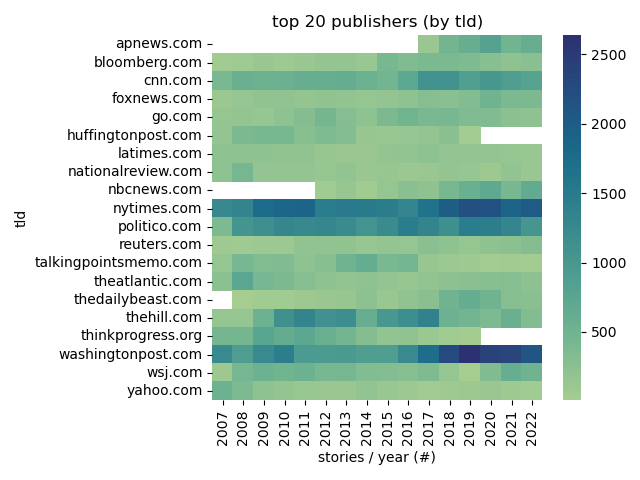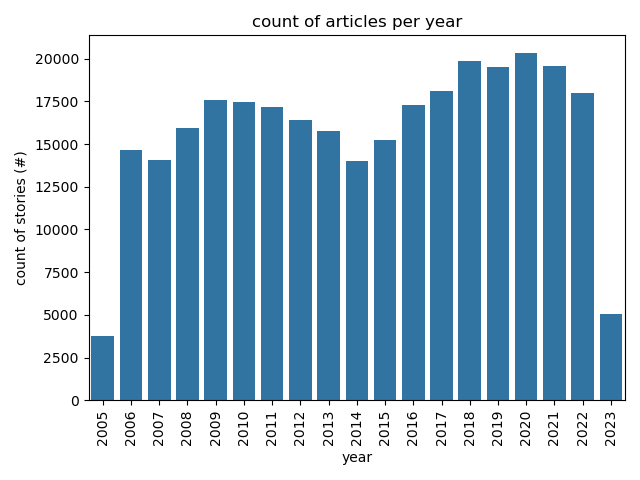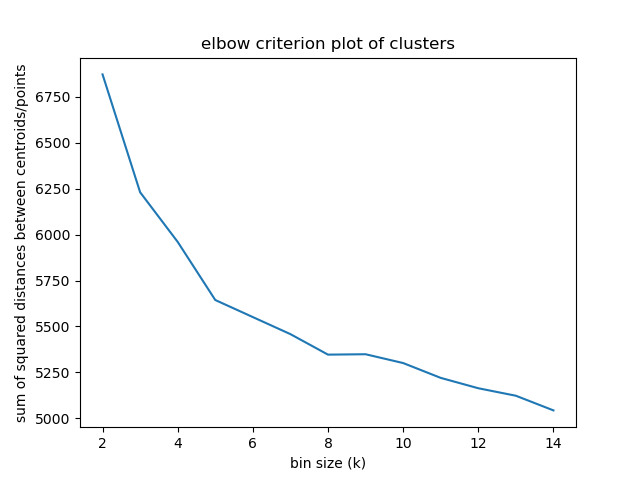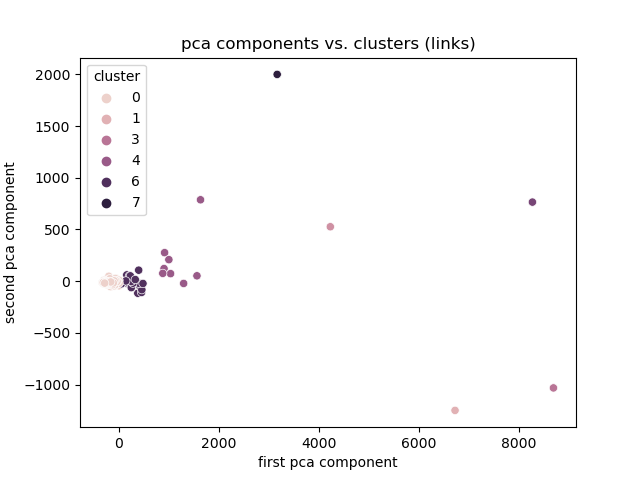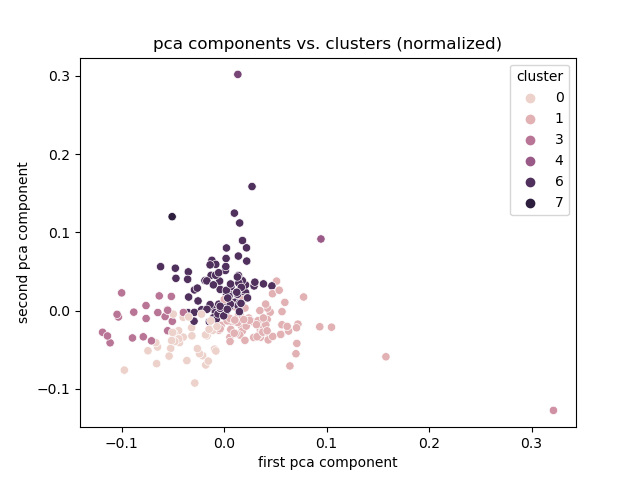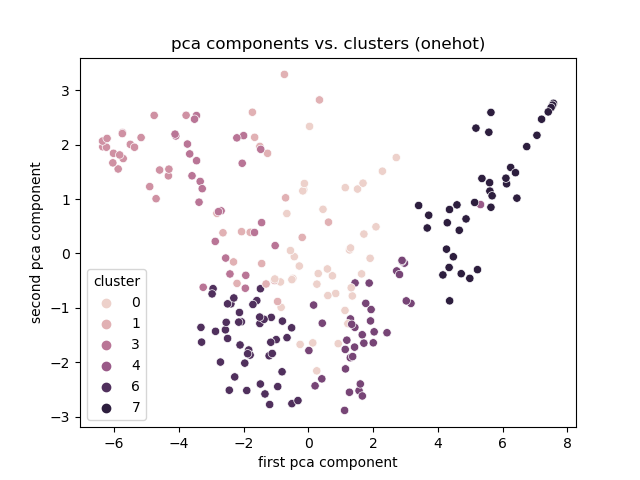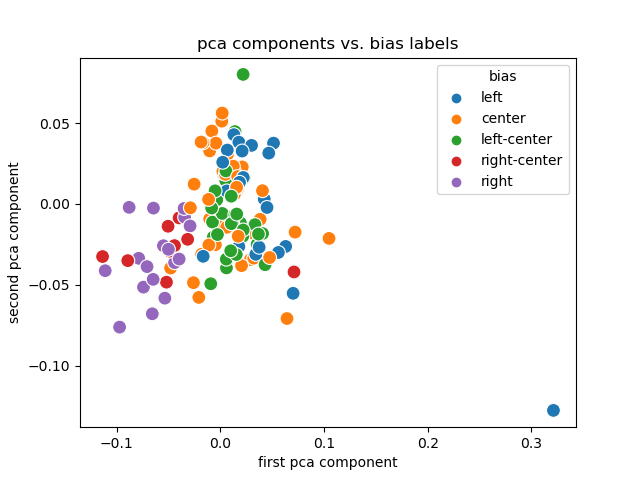13 KiB
_model: slides
title: CSCI 577 - Data Mining
body:
Political Polarization
Matt Jensen
===
Hypothesis
Political polarization is rising, and news articles are a proxy measure.
==
Is this reasonable?
==
Why is polarization rising?
Not my job, but there's researchref to support it
==
Sub-hypothesis
- The polarization increases near elections.
- The polarization is not evenly distributed across publishers.
- The polarization is not evenly distributed across political specturm.
==
Sub-sub-hypothesis
- Similarly polarized publishers link to each other.
- 'Mainstream' media uses more neutral titles.
- Highly polarized publications don't last as long.
===
Data Source(s)
memeorandum.com
allsides.com
huggingface.com
===
===
memeorandum.com
- News aggregation site.
- Was really famous before Google News.
- Still aggregates sites today.
==
Why Memeorandum?
- Behavioral: I only read titles sometimes. (doom scrolling).
- Behavioral: It's my source of news (with sister site TechMeme.com).
- Convenient: most publishers block bots.
- Convenient: dead simple html to parse.
- Archival: all headlines from 2006 forward.
- Archival: automated, not editorialized.
===
===
AllSides.com
- Rates news publications as left, center or right.
- Ratings combine:
- blind bias surveys.
- editorial reviews.
- third party research.
- community voting.
- Originally scraped website, but direct access eventually.
==
Why AllSides?
- Behavioral: One of the first google results on bias apis.
- Convenient: Ordinal ratings [-2: very left, 2: very right].
- Convenient: Easy format.
- Archival: Covers 1400 publishers.
===
===
HuggingFace.com
- Deep Learning library.
- Lots of pretrained models.
- Easy, off the shelf word/sentence embeddings and text classification models.
==
Why HuggingFace?
- Behavioral: Language Models are HOT right now.
- Behavioral: The dataset needed more features.
- Convenient: Literally 5 lines of python.
- Convenient: Testing different model performance was easy.
- Archival: Lots of pretrained classification tasks.
===
Data Structures
Stories
- Top level stories.
- title.
- publisher.
- author.
- Related discussion.
- publisher.
- uses 'parent' story as a source.
- Stream of stories (changes constantly).
==
Data Structures
Bias
- Per publisher.
- name.
- label.
- agree/disagree vote by community.
- Name could be semi-automatically joined to stories.
==
Data Structures
Embeddings
- Per story title.
- sentence embedding (n, 384).
- sentiment classification (n, 1).
- emotional classification (n, 1).
- ~ 1 hour of inference time to map story titles and descriptions.
===
Data Collection
==
Data Collection
Story Scraper (simplified)
day = timedelta(days=1)
cur = date(2005, 10, 1)
end = date.today()
while cur <= end:
cur = cur + day
save_as = output_dir / f"{cur.strftime('%y-%m-%d')}.html"
url = f"https://www.memeorandum.com/{cur.strftime('%y%m%d')}/h2000"
r = requests.get(url)
with open(save_as, 'w') as f:
f.write(r.text)
==
Data Collection
Bias Scraper (hard)
...
bias_html = DATA_DIR / 'allsides.html'
parser = etree.HTMLParser()
tree = etree.parse(str(bias_html), parser)
root = tree.getroot()
rows = root.xpath('//table[contains(@class,"views-table")]/tbody/tr')
ratings = []
for row in rows:
rating = dict()
...
==
Data Collection
Bias Scraper (easy)
==
Data Collection
Embeddings (easy)
# table = ...
tokenizer = AutoTokenizer.from_pretrained("roberta-base")
model = AutoModel.from_pretrained("roberta-base")
for chunk in table:
tokens = tokenizer(chunk, add_special_tokens = True, truncation = True, padding = "max_length", max_length=92, return_attention_mask = True, return_tensors = "pt")
outputs = model(**tokens)
embeddings = outputs.last_hidden_state.detach().numpy()
...
==
Data Collection
Classification Embeddings (medium)
...
outputs = model(**tokens)[0].detach().numpy()
scores = 1 / (1 + np.exp(-outputs)) # Sigmoid
class_ids = np.argmax(scores, axis=1)
for i, class_id in enumerate(class_ids):
results.append({"story_id": ids[i], "label" : model.config.id2label[class_id]})
...
===
Data Selection
==
Data Selection
Stories
- Clip the first and last full year of stories.
- Remove duplicate stories (big stories span multiple days).
==
Data Selection
Publishers
- Combine subdomains of stories.
- blog.washingtonpost.com and washingtonpost.com are considered the same publisher.
- This could be bad. For example: opinion.wsj.com != wsj.com.
==
Data Selection
Links
- Select only stories with publishers whose story had been a 'parent' ('original publishers').
- Eliminates small blogs and non-original news.
- Eliminate publishers without links to original publishers.
- Eliminate silo'ed publications.
- Link matrix is square and low'ish dimensional.
==
Data Selection
Bias
- Keep all ratings, even ones with low agree/disagree ratio.
- Join datasets on publisher name.
- Not automatic (look up Named Entity Recognition).
- Started with 'jaro winkler similarity' then manually from there.
- Use numeric values
- [left: -2, left-center: -1, ...]
===
Descriptive Stats
Raw
| metric | value |
|---|---|
| total stories | 299714 |
| total related | 960111 |
| publishers | 7031 |
| authors | 34346 |
| max year | 2023 |
| min year | 2005 |
| top level domains | 7063 |
==
Descriptive Stats
Stories Per Publisher
==
Descriptive Stats
Top Publishers
==
Descriptive Stats
Articles Per Year
==
Descriptive Stats
Common TLDs
==
Descriptive Stats
Post Process
| key | value |
|---|---|
| total stories | 251553 |
| total related | 815183 |
| publishers | 223 |
| authors | 23809 |
| max year | 2022 |
| min year | 2006 |
| top level domains | 234 |
===
Experiments
- clustering on link similarity.
- classification on link similarity.
- classification on sentence embedding.
- classification on sentiment analysis.
- regression on emotional classification over time and publication.
===
Experiment 1
Setup
- Create one-hot encoding of links between publishers.
- Cluster the encoding.
- Expect similar publications in same cluster.
- Use PCA to visualize clusters.
Note: Principle Component Analysis:
- a statistical technique for reducing the dimensionality of a dataset.
- linear transformation into a new coordinate system where (most of) the variation data can be described with fewer dimensions than the initial data.
==
Experiment 1
One Hot Encoding
| publisher | nytimes | wsj | newsweek | ... |
|---|---|---|---|---|
| nytimes | 1 | 1 | 1 | ... |
| wsj | 1 | 1 | 0 | ... |
| newsweek | 0 | 0 | 1 | ... |
| ... | ... | ... | ... | ... |
==
Experiment 1
n-Hot Encoding
| publisher | nytimes | wsj | newsweek | ... |
|---|---|---|---|---|
| nytimes | 11 | 1 | 141 | ... |
| wsj | 1 | 31 | 0 | ... |
| newsweek | 0 | 0 | 1 | ... |
| ... | ... | ... | ... | ... |
==
Experiment 1
Normalized n-Hot Encoding
| publisher | nytimes | wsj | newsweek | ... |
|---|---|---|---|---|
| nytimes | 0 | 0.4 | 0.2 | ... |
| wsj | 0.2 | 0 | 0.4 | ... |
| newsweek | 0.0 | 0.0 | 0.0 | ... |
| ... | ... | ... | ... | ... |
==
Experiment 1
Elbow criterion
Note:
The elbow method looks at the percentage of explained variance as a function of the number of clusters:
One should choose a number of clusters so that adding another cluster doesn't give much better modeling of the data.
Percentage of variance explained is the ratio of the between-group variance to the total variance,
==
Experiment 1
Link Magnitude
==
Experiment 1
Normalized
==
Experiment 1
Onehot
==
Experiment 1
Discussion
- Best encoding: One hot.
- Clusters based on total links otherwise.
- Clusters, but no explanation
- Limitation: need the link encoding to cluster.
- Smaller publishers might not link very much.
===
Experiment 2
Setup
- Create features. :
- Publisher frequency.
- Reuse link encodings.
- Create classes:
- Join bias classifications.
- Train classifier.
Note:
==
Experiment 2
Descriptive stats
| metric | value |
|---|---|
| publishers | 1582 |
| labels | 6 |
| left | 482 |
| center | 711 |
| right | 369 |
| agree range | [0.0-1.0] |
==
Experiment 2
PCA + Labels
==
Experiment 2
Discussion
- Link encodings (and their PCA) are useful.
- Labels are (sort of) separated and clustered.
- Creating them for smaller publishers is trivial. ==
Experiment 2
Limitations
- Dependent on accurate rating.
- Ordinal ratings not available.
- Dependent on accurate joining across datasets.
- Entire publication is rated, not authors.
- Don't know what to do with community rating.
===
Experiment 3
Setup
==
Limitations
- Many different authors under the same publisher.
- Publishers use syndication.
- Bias ratings are biased.
===
Questions
===
References
[1]: Stewart, A.J. et al. 2020. Polarization under rising inequality and economic decline. Science Advances. 6, 50 (Dec. 2020), eabd4201. DOI:https://doi.org/10.1126/sciadv.abd4201.
Note:


